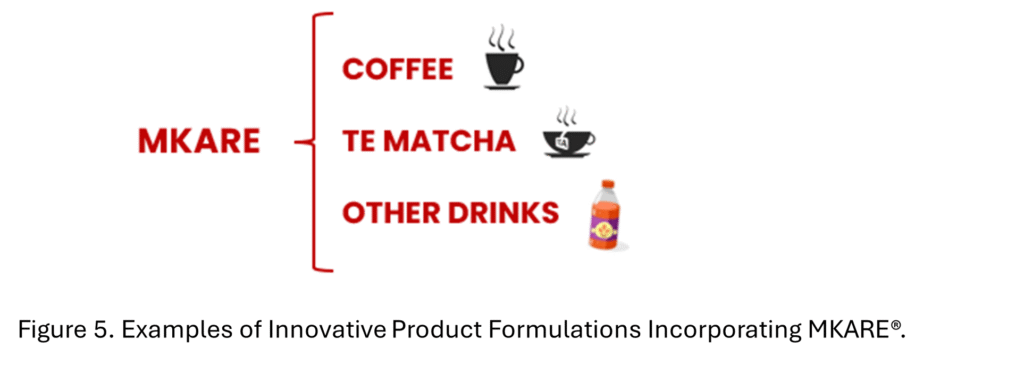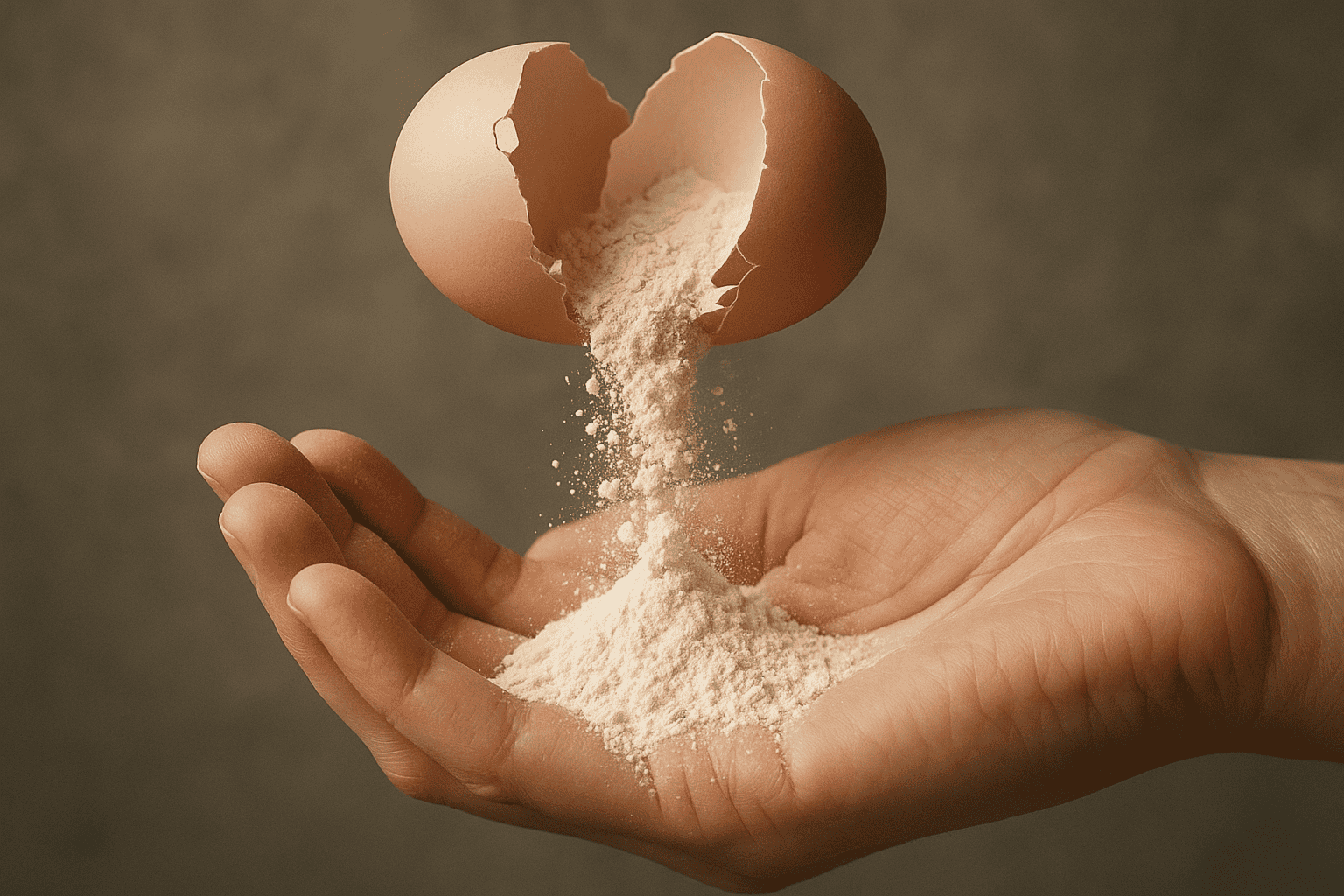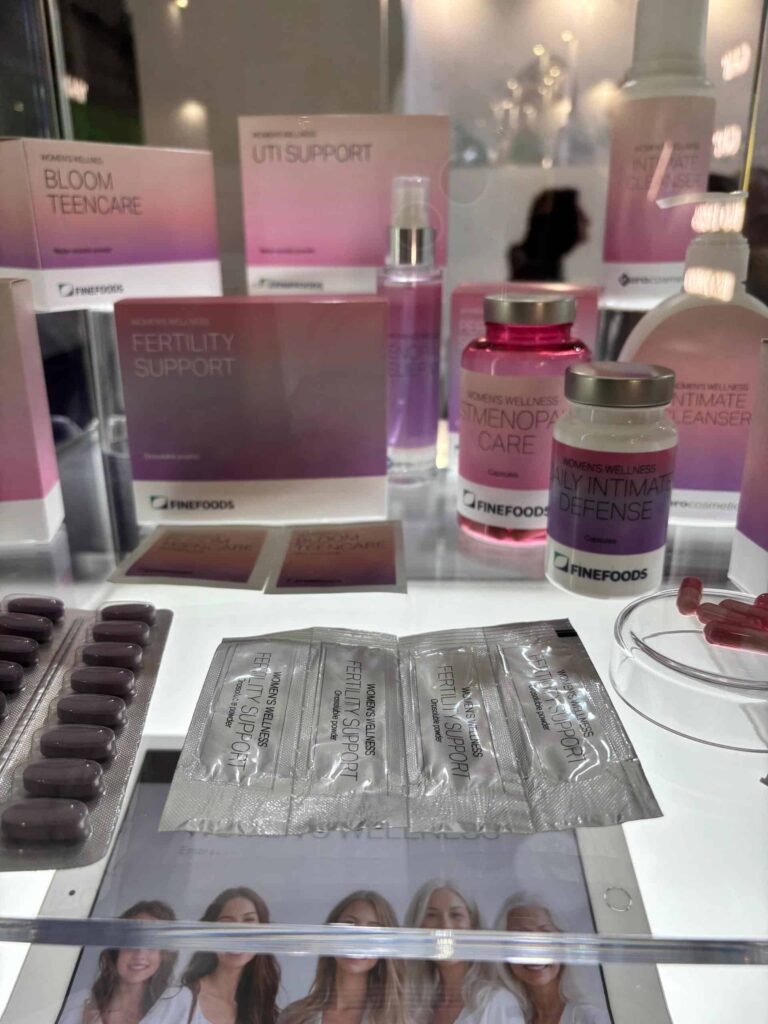Elastin, the secret of skin elasticity
Elastin is a vital extracellular matrix protein that provides elasticity and resilience to various tissues. Its unique ability to undergo reversible deformation distinguishes it from other structural proteins such as collagen. The synthesis and organization of elastin are tightly regulated processes involving specific cross-linking amino acids that ensure its long-term durability. Understanding elastin’s structure and function is essential for comprehending skin aging and developing antiaging solutions.
What is elastin?
Elastin, the pillar of tissue elasticity, is a fundamental structural protein, vital for the elasticity and resilience of numerous soft tissues in mammalian bodies. Unlike other proteins, its most notable and distinguishing characteristic is its unique ability to confer reversible elasticity. This means that tissues can stretch significantly and then return to their original shape without sustaining damage.
An unusual chemical composition
The key to elastin’s extraordinary elasticity lies in its molecular composition and structure. It has a high content of hydrophobic amino acids such as valine, proline, and glycine, which give it a disordered conformation when not under tension. However, what truly sets it apart is the presence of the unique amino acids desmosine and isodesmosine. These are lysine derivatives that act as cross-links, joining multiple elastin chains together. These cross-links are crucial because they allow the elastin network to stretch and contract in a coordinated manner without breaking, similar to a three-dimensional net that expands and shrinks
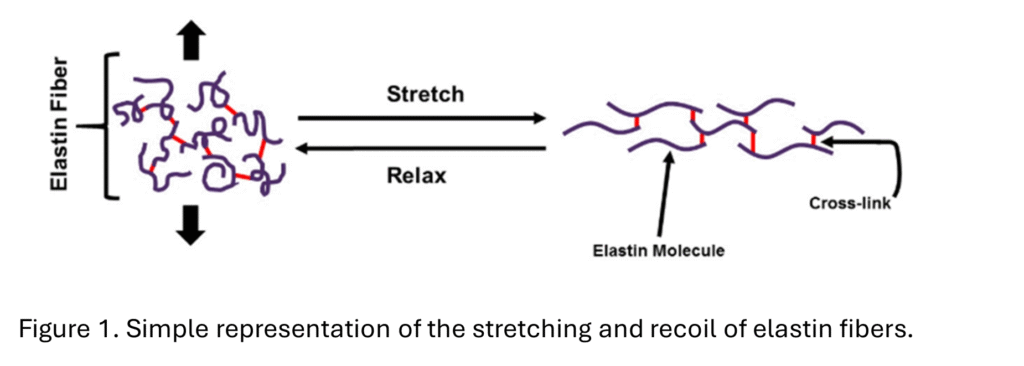
A sophisticated formation process
Elastin formation is a complex and strictly regulated process. It begins with tropoelastin synthesis, which then organizes with the help of fibrillin microfibrils. Finally, enzymes like lysyl-oxidases create desmosine and isodesmosine cross-links, which are essential for elastin to provide vital elasticity and resilience to tissues like skin and blood vessels.
What is the function of elastin?
Elastin’s primary function is to provide flexibility and elasticity to tissues. Its unique structure, characterized by intertwined fibers, allows tissues like the skin to stretch significantly and then recoil to their original position. This crucial protein also plays a vital role in preventing the breakage of connective tissue fibers (which are mainly composed of collagen) and helps maintain skin integrity by preventing the formation of wrinkles, sagging, and the appearance of stretch marks.
The structure of the skin
Skin can be visualized as a coexistence and synergy of a perfect trident of collagen and elastin networks, immersed in a viscous water-saturated medium rich in glycosaminoglycans (GAGs), especially Hyaluronic acid:
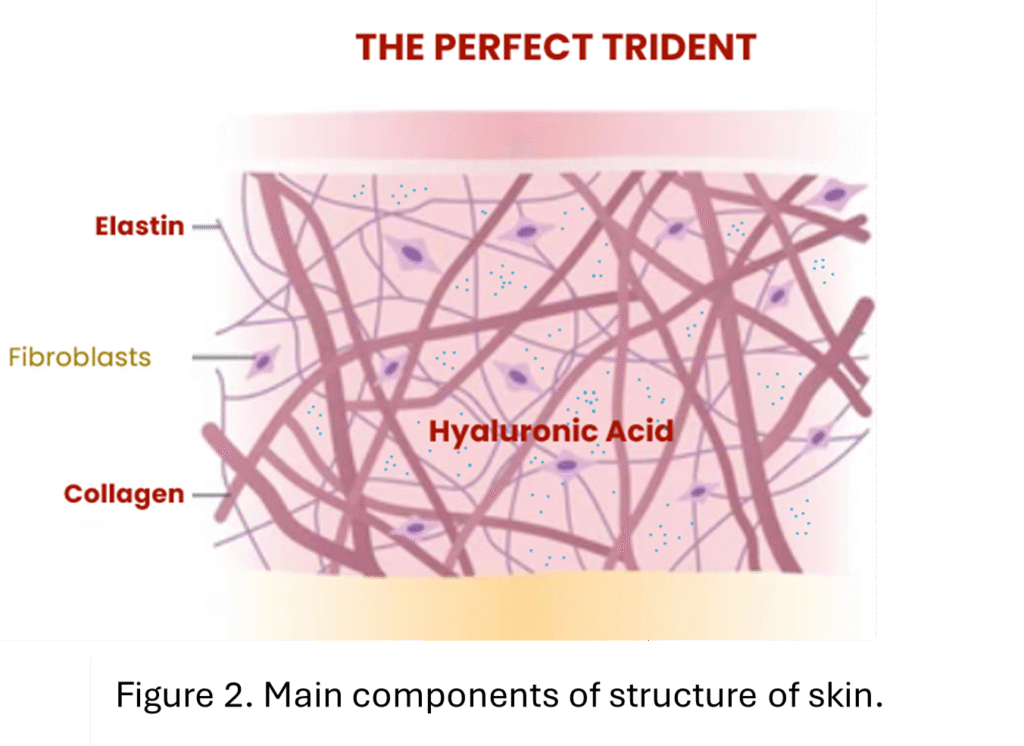
Elastin: It constitutes 2% to 4% of the dry weight of the dermis in adults. It is the protein that confers resilience and elasticity to the tissues to provide stretching and recoil to the skin.
Collagen: It makes up approximately 75% of the skin’s composition. It is responsible for tensile strength and plays a crucial structural role.
Hyaluronic Acid: It is a molecule that has the capacity to retain water in the tissues. The loss of skin hydration is associated with the degradation and loss of this molecule, which is vital to maintaining hydrated skin.
Understanding skin aging
Skin aging is a complex process marked by the weakening and fragmentation of elastic fibers, primarily due to a natural decline in the production of their essential components over time. This decline is influenced by both intrinsic factors, such as genetics and hormonal changes, and extrinsic factors, including sun exposure, tobacco use, and poor nutrition.
This multifaceted process leads to a range of visible signs of aging. These include the formation of wrinkles, a noticeable loss of elasticity, thinning of the skin, reduced hydration, increased sagging, and enhanced skin fragility.
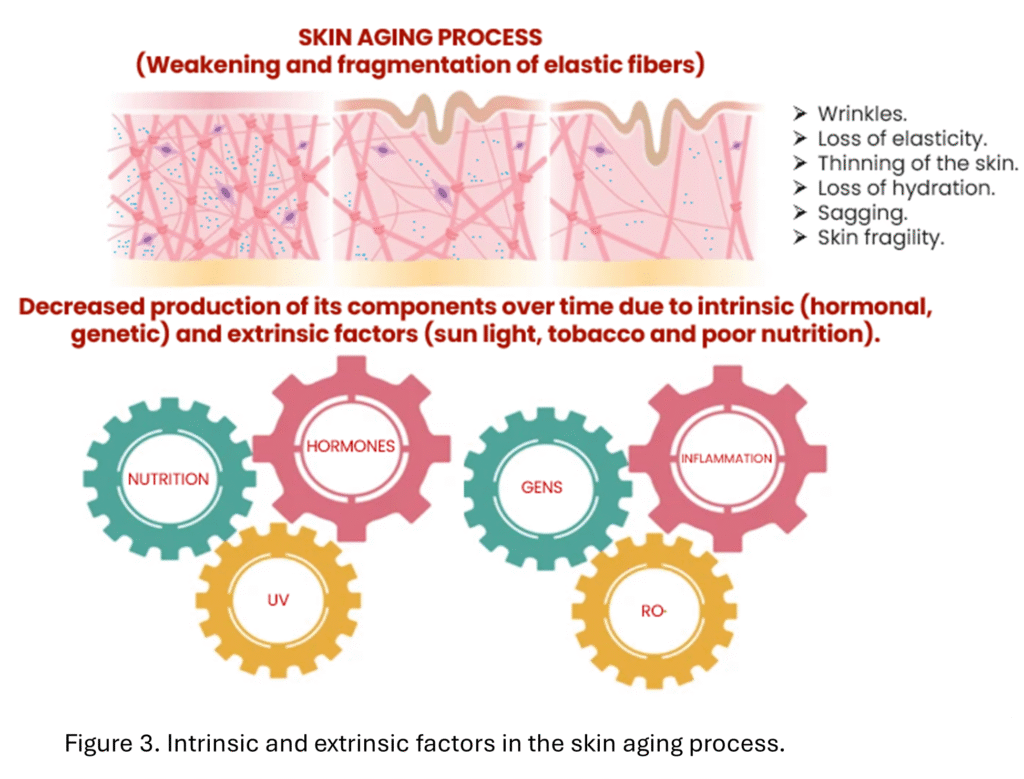
Skin elastin care: nurturing your skin’s resilience
Maintaining healthy elastin and, by extension, youthful skin, requires a multifaceted strategy that combines internal care with external protection. It’s fundamental to avoid tobacco and excessive alcohol, both known aggressors to skin health. Adequate hydration is also key, and protecting the skin from sun exposure is paramount, as UV radiation is a leading cause of elastin degradation. Furthermore, it’s crucial to avoid foods that promote glycation, a process that can stiffen and damage collagen and elastin fibers. Instead, we should focus on an antioxidant and anti-inflammatory diet that also supports a balanced gut microbiota, given that skin health is linked to gut health. Eating ssential and non-essential amino acids is another important point to consider because they are the building blocks for protein like elastin.
Food supplements strategy
Beyond diet, food supplements emerge as an indispensable partner in achieving healthy, youthful skin. They are formulated to provide an optimal concentration of vital nutrients and bioactive compounds that are frequently difficult to acquire in adequate amounts through diet alone.
For example, MKARE® eggshell membrane is an ideal ingredient for protecting and improving the condition of the skin thanks to its rich composition, as it contains the same nutrients that are necessary for the maintenance and regeneration of the skin, such as collagen, hyaluronic acid and elastin.
In addition, thanks that MKARE® is produced within just a few hours of the eggshell’s generation, it provides proteins with powerful anti-inflammatory properties, such as lysozyme and ovotransferrin, which contribute to healthier and more protected skin.
Clinical studies reveal a significant improvement in skin firmness, flexibility, and elasticity with the intake of MKARE® compared to a placebo. This demonstrates a direct intrinsic effect on the skin’s biomechanical structure, particularly on skin elastin.
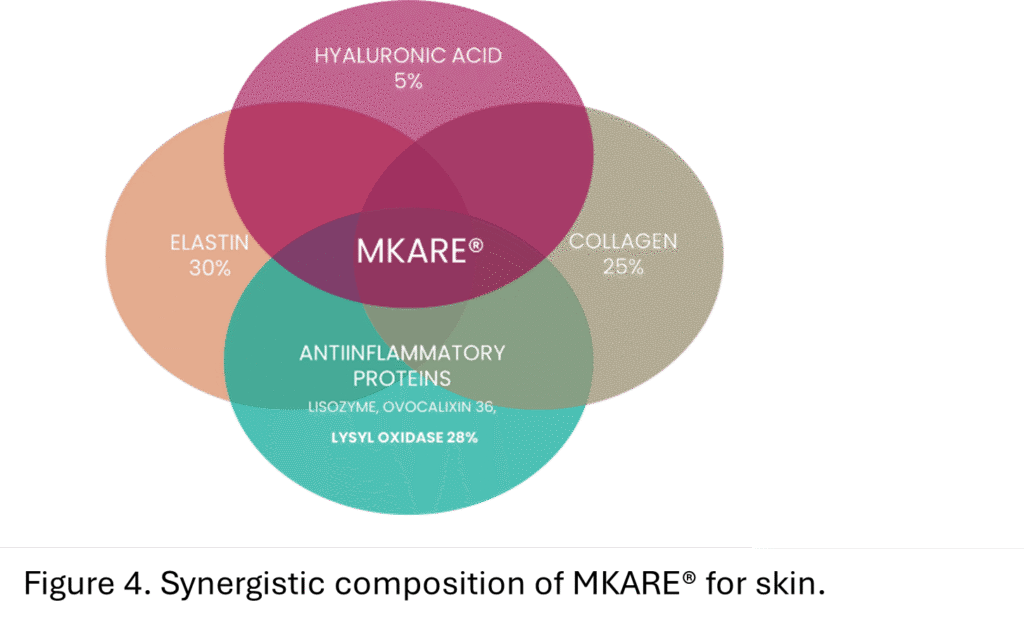
Key ingredients that enhance MKARE’s effect on skin health.
While the MKARE® eggshell membrane provides ideal components for more elastic and supple skin, its effectiveness can be greatly enhanced by creating a synergy with other ingredients that protect and stimulate skin regeneration.
Antioxidants (Vitamins C & E, Ferulic Acid, Polyphenols):
Elastin is highly susceptible to damage from free radicals unstable molecules generated by sun exposure, pollution, tobacco, and other stressors. Antioxidants neutralize these free radicals, protecting elastic fibers from deterioration.
Vitamins:
For example, Vitamin A Derivatives (Retinoids) are one of the most studied anti-aging ingredients. While their primary action is to stimulate collagen production and accelerate cell turnover, they have also been shown to help prevent elastin degradation and can improve the quality of existing elastic fibers.
Essential minerals (Zinc, Copper, …):
For instance, copper serves as a key cofactor for the lysyloxidase enzyme, which is fundamental in the formation of cross-links in both elastin and collagen. In this context, a synergistic effect is established with this enzyme, which is also found in egg membrane. Zinc is another essential mineral necessary for the function of many skin-repairing enzymes and works very well together with MKARE®.
Probiotics (e.g., Lactobacillus plantarum):
Certain beneficial bacteria, such as Lactobacillus plantarum, have demonstrated synergy with egg membrane by generating short-chain fatty acids (SCFAs), which possess anti-inflammatory capabilities in the body.
Applications and formats of eggshell membrane in final products.
Years of research have been invested to seamlessly integrate eggshell membrane into traditional consumption formats like capsules, tablets, softgels, and liquid formulations for vials. Beyond these conventional applications, innovation has also driven the successful development of disruptive new formats, including functional coffees, Matcha tea, jellies, and a variety of other beverages.
